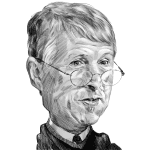Robert was born into an affluent Jewish family in New York City. His father Julius had been born in the Hesse-Nassau province in the territory of the Kingdom of Prussia in what had just become the united German Empire months prior to his birth in May 1871.
At a time of growing Anti-Semitism across Western and Central Europe, Julius Oppenheimer left Germany in 1888 at 17 years of age bound for the United States. Though virtually penniless, he prospered in America and by the time Robert was born in
1904 he had risen to become a wealthy executive at one of Manhattan’s leading textile manufacturers. Robert’s mother was Ella Friedman, a woman of Jewish heritage as well, who had been born in New York in 1870 to a family of German Jews who had headed for America a generation before Julius Oppenheimer.
She was a painter from whom Robert inherited some of his aesthetic views on the structure of existence and the universe. Ella and Julius would have one other child, a boy named Frank who was born eight years after Robert in 1912 and who would follow in the steps of his older brother by becoming
A physicist. Robert’s youth was a privileged one. By the mid-1900s his father had become a substantial figure within New York business circles and in the early 1910s they moved into a large apartment on West 88th Street in Manhattan overlooking the Central Park Reservoir in one of the most affluent areas of New York
City at the time. There the family had original works by Vincent Van Gogh and Pablo Picasso among others on the walls. Robert attended the Ethical Culture School followed by the Alcuin Preparatory School, two of New York’s best educational establishments in the early twentieth century.
By the time he was five he was already interested in minerology, a hobby inherited from his German grandfather. Such was his aptitude, that at eleven years of age he was admitted to the Mineralogical Club of New York City. His precociousness extended into his secondary school years and he finished his education
At Alcuin in a year and a half less than the standard time, having taken two grade years in twelve months and being fast-tracked through the eighth grade. By this time his interests had developed beyond minerology into the harder sciences, particularly
Chemistry, but it was eventually physics which would prove his calling in years to come. In 1922 Oppenheimer began studying at Harvard University at the age of 18. Robert initially intended to focus on studying chemistry but soon switched to physics, yet his earlier interest in chemistry and his eclectic inquisitiveness would serve him well
In later years during a period when scientists were becoming all too specialised in specific fields. While studying at America’s oldest college, he was deeply influenced by the teachings of Professor Percy Bridgeman, an experimental physicist on the staff at Harvard at the time.
This was also a period when students at Harvard and other elite universities in America still studied a very wide range of subjects and Oppenheimer delved deeply into history and the Greek and Latin classics, which were still central to many western curricula in the 1920s.
Reflecting on his years at Harvard in later life Oppenheimer noted that he spent most of his time in the library and read voraciously. He even attended more classes than it was necessary for him to. The result in 1925, was that Oppenheimer graduated with a Bachelor of Arts summa cum laude after
Just three years at Harvard, a distinction which usually took four years to attain, but which Oppenheimer, following an emerging pattern, completed in less than the standard time. Even before he graduated from Harvard, Oppenheimer had already been accepted to continue his studies at Cambridge University in England.
This was the great centre for the study of physics in Britain at the time, a reputation it has held and cultivated since Isaac Newton’s days there in the late seventeenth century. The year that Oppenheimer spent at Cambridge between the fall of 1925 and the summer of
1926 was influential in his development, as he was exposed there to the teachings of Lord Ernest Rutherford, a New Zealand-born physicist who is typically understood to be the father of nuclear physics today. For instance, it was Rutherford who first discovered and explained what nuclear half-life
And the radiation associated with it were, an achievement which Rutherford was awarded a Nobel Prize in Chemistry for in 1908. Towards the end of his first year at Cambridge, Oppenheimer, whose abilities were beginning to attract considerable attention amongst European physicists, accepted an offer from
The German physicist Max Born to study under him at the University of Gottingen in Germany, one of Europe’s great centres of learning. There Oppenheimer studied with a number of contemporaries who would become giants of the study of theoretical physics during the twentieth century, notably Werner Heisenberg,
Enrico Fermi and Edward Teller, several of whom Oppenheimer would work alongside during the Manhattan Project in the midst of the Second World War. Remarkably, Oppenheimer was awarded his PhD in physics in the spring of 1927, less than a year after arriving in Gottingen.
The internal examiner, James Franck, who had won the Nobel Prize for Physics two years earlier in 1925, is famously said to have expressed relief when the oral examination or viva voce concluded, stating that Oppenheimer had easily defended his doctoral work and had seemed to be ready to begin questioning Franck.
The great promise which Oppenheimer showed as a theoretical physicist as he acquired his PhD around the same time he turned 23, was most clearly demonstrated in a paper which he and Born co-authored on the ‘Quantum Theory of Molecules’ in 1927 and which laid
Out what has come to be known as the Born-Oppenheimer Approximation. This pertains to the field of molecular dynamics or how molecules move and interact. The approximation which Born and Oppenheimer demonstrated, showed that the wave functions of nuclei and electrons within a molecule are different, owing to the fact that nuclei
Are considerably heavier than the electrons. This means that the co-ordinates of the nuclei are relatively fixed in place, whereas the lighter electrons are impacted on to a greater extent by wave functions and their co-ordinates are consequently more dynamic. The approximation was reached by the pair to a great extent owing to Oppenheimer’s
Dual interests in chemistry and physics, as the theory which they presented employed elements of quantum chemistry and molecular physics. In terms of its practical applicability the approximation was important in allowing scientists from the late 1920s onwards to separate the motion of a nuclei and an electron.
The individual who worked this out with Max Born and who acquired his PhD at Gottingen was a curious figure. Oppenheimer was a mix of a distant scientist and a relatively jovial individual, slipping from introversion to extroversion as occasion sometimes demanded or as his mood was inclined.
A chain-smoker, he was perennially surrounded by a cloud of smoke throughout his adult life, a habit which would contribute substantially to his premature death in his early sixties. Individuals who knew him during his years at Harvard, Cambridge and Gottingen recalled
A person who was a strange mix of intelligence combined with a striking naivety at times, often making poor judgements and decisions and being prone to exaggeration. As the years went by, he developed an arrogant streak, but this was tempered by intellectual
Generosity to those who studied and worked with him and those he taught in later years. A striking aspect of his personality was his interest in eastern philosophy and mysticism, being particularly interested in Hinduism and Confucianism, even going so far as to
Learn Sanskrit, the sacred language of Hinduism, so that he might read the ancient texts of this faith in the original. This interest in religion and mysticism was not an eccentric pastime. For Oppenheimer, the study of physics was an entry point into understanding the mystical
Nature of the universe and existence and his broader intellectual outlook was one of open curiosity rather than a quest for hard scientific data. There was, though, also an unstable and erratic side to Oppenheimer. His behaviour at Harvard was sometimes questioned by fellow students and teachers.
In 1926 while he was at Cambridge he allegedly doused an apple with some illness-inducing chemicals and left it in the office of his tutor, Patrick Blackett, with whom he had had a difficult relationship, before heading off to France on holiday.
Evidently this action and perhaps others besides, saw him briefly threatened with being suspended from his studies at Cambridge. A close friend of his in the 1920s, Francis Ferguson, who later went on to become an acclaimed theorist of stage performance and drama, claimed that Oppenheimer attacked him and tried to
Strangle him once when he told him he was engaged to be married. Underlying all of this erratic behaviour, was a strange mix of an individual who could be appallingly arrogant and fell out with a great many colleagues over the years as
A result, but who many biographers have concluded was also a deeply insecure individual. The root of this may have been Oppenheimer’s position as the son of a German-Jewish émigré to America at a time when Anti-Semitism was common across the western world.
He was a constant outsider, or at least felt like one, and is known to have suffered frequently from bouts of depression. He was, in short, something of an enigma. After completing his studies at Gottingen and publishing several more papers from the
Research he had undertaken in England and Germany, Oppenheimer returned to the United States, briefly holding fellowships at Harvard and the California Institute of Technology, punctuated by return visits to Europe to work for a few months at the University of Leiden
In the Netherlands and at Zurich in Switzerland, where Albert Einstein had carried out much of his earliest and most ground-breaking work. In Leiden he acquired his nickname Oppie from a bawdlerised Dutch rendering of his name. It was not until 1929 that Oppenheimer settled back in America permanently, having been presented
With numerous job offers from US universities. He accepted two and became an associate professor in physics at both the University of California at Berkeley and the California Institute of Technology or Caltech. For the next thirteen years, between 1929 and 1942 he would hold positions at both institutions,
Teaching during the fall and winter semesters at Berkeley before spending the spring term lecturing at Caltech in Pasadena. During the 1930s Oppenheimer became famous within the physics community in the United States for his teaching methods and the finest physicists of the mid-twentieth century in
America trained under him at Berkeley and Caltech at the School of Theoretical Physics which he founded. Within this there was usually a cohort of a dozen or so advanced graduate students and research fellows who worked closely with Oppenheimer on some of the most relevant questions in
The field of theoretical physics at the time. During busier times in term they would often meet daily, with Oppenheimer quizzing them on their progress and offering suggestions thereon. Mostly, as several biographers who knew him during those days later recounted, he inspired
Those he taught, conveying to them the idea that they were at the forefront of answering some of the most important questions facing humanity at the time. Yet it was an eclectic academic environment and when not discussing physics, Oppenheimer
And his colleagues were often seen to be reading Plato in the original Greek or learning Sanskrit. Hans Bethe, who knew Oppenheimer during these days, later recalled that Robert was largely aloof from the wider world in the late 1920s and 1930s in California, only learning of
The Wall Street Crash of late 1929, months after it had happened. There were impressive scientific breakthroughs made by Oppenheimer and his students at Berkeley and Caltech during the 1930s. In 1930, for instance, Oppenheimer wrote a paper which effectively predicted the existence
Of the positron or antielectron as an antiparticle of the electron, although its existence was not fully proven until 1932 by Carl David Anderson, a student who worked with Oppenheimer at Caltech. Following on from this, Oppenheimer worked closely with Wendell Furry, to work out the
Modern form of the electron-positron theory and how the two interacted with each other. Perhaps his most important work though was a giant effort with Melba Phillips, one of Oppenheimer’s first doctoral students at a time when female physicists were all too rare in the United States.
Together they proposed the Oppenheimer-Phillips Process in 1935, a type of deuteron-induced nuclear reaction in which the neutron half of a deuteron fuses with a target nucleus, ejecting a proton in the process. This proved that some elements can become radioactive if bombarded by deuterons and
That a nuclear interaction can occur at lower energies than had previously been understood. This, and many other breakthroughs by both Oppenheimer and his students at Berkeley and Caltech, made California one of the world’s great centres of theoretical physics in the mid-twentieth century. Oppenheimer’s personal life was somewhat chaotic during this period.
He had been diagnosed with a mild case of tuberculosis in the late 1920s, for which condition he sought out the dry desert air of Arizona and New Mexico in the years that followed, eventually buying a ranch in New Mexico. In the mid-1930s, he began a relationship with Jean Tatlock, a psychiatry student who
Was the daughter of John Strong Tatlock, an eminent Old English scholar and expert on the life and works of Geoffrey Chaucer. Ten years Robert’s junior, Jean was a troubled young woman with severe depression and a conflicted sexuality. Their relationship was tempestuous but continued through to 1940, even after Oppenheimer began
Seeing Kitty Harrison, a botanist and physicist at Caltech who eventually divorced her second husband, Stewart Harrison, in November 1940 and married Robert the following day. It remains unclear to this day if Oppenheimer continued to periodically see Tatlock in the early 1940s prior to her taking her own life in January 1944.
Robert and Kitty would subsequently have two children, a boy named Peter who was born in May 1941, as Kitty had been pregnant already when they married, and a daughter named Katherine after her mother, who was born in 1944. Oppenheimer’s life, like that of virtually every individual across Europe, North Africa,
North America and much of Asia, was hugely interrupted in the autumn of 1939 by the outbreak of the Second World War. The conflict came about as a direct result of the ascent to power in Germany of the Nazis led by Adolf Hitler early in 1933.
A rabidly anti-Semitic nationalist and fascist organisation, the Nazis had made their twin goals to crush the Jewish people in Germany and to initiate a new war in Europe to overturn the terms of the Treaty of Versailles which had brought the First World War to an end
And to build a new German Third Reich or empire which would dominate the continent. Oppenheimer was very familiar with the Nazis. As a Jew himself, albeit a non-observant one, he had become politically involved for the first time in his life during the mid-1930s when he began setting aside 3% of his salary
To help German Jews who were trying to flee Germany in the wake of the anti-Jewish Nuremburg Laws which were introduced from 1934 onwards. The Nazis’ anti-Jewish policies had become more extreme from 1936 onwards and particularly so in 1938, as Germany began annexing neighbouring states, firstly Austria and then Czechoslovakia.
With the invasion of Poland in September 1939, Britain and France declared war on Germany, but public opinion in the United States was not yet wholly in favour of intervention, in what was deemed to be a European war. Therefore, America would remain officially neutral for the first two years of the conflict,
Though the administration of President Franklin Delano Roosevelt was providing extensive support in the shape of war material to Britain, from the war’s inception. Oppenheimer’s life and his place in history would be changed forever by the events of December 1941.
By that time, the United States still remained neutral in the Second World War, despite the desperate situation in Europe, with the Nazis conquering Poland in the autumn of 1939, Denmark and Norway the following spring and then the Low Countries and France in the summer of 1940.
With many other states like Italy, Hungary and Romania allied with the Nazis and invasions of Britain’s colonies in North Africa and Russia afoot from the summer of 1941 onwards, it seemed that Germany was destined to dominate Europe. It was in this context, that the Empire of Japan, an ultra-nationalist state bent on
Creating an Asiatic and Pacific empire, one which already included Korea, Manchuria and much of eastern China by the early 1940s, decided to pre-emptively attack the United States without declaring war. The attack on Pearl Harbour in Hawaii and other American territories such as the Philippines
On the 7th of December 1941, pulled the United States into the Second World War. Within days the US was at war with Germany, Italy and the other Axis states as the entirety of the Northern Hemisphere ended up at war. Oppenheimer would soon be catapulted to the centre of America’s research efforts during
The conflict. This occurred in the context of efforts by Nazi Germany to acquire a weapon of mass destruction as a means of winning the war swiftly. In the 1920s and the 1930s Germany had been home to some of the world’s leading scientists and so was well placed to develop a nuclear weapon.
Nuclear fission, for instance, had been discovered by a team led by Otto Robert Frisch and Lise Meitner in Berlin in 1938. Various experiments were initiated by the Nazis the following year to begin using this breakthrough to develop a nuclear weapon.
Some of these focused on developing a nuclear reactor, while others favoured the theory of using heavy water to produce an atomic weapon, research which was carried out in Nazi-occupied Norway throughout the war. Already in August 1939 President Roosevelt in Washington D.C. had received a letter from
The Hungarian nuclear physicist, Leo Szilard, and Albert Einstein, alerting the US government to the threat posed by these Nazi experiments. Little effort was made to respond to this in 1939 or 1940, but with the entry of the US into the war at the end of 1941, fresh consideration was given to America commencing
Its own research in this area. Oppenheimer would technically be in charge of the Los Alamos Laboratory during the Second World War, but this was all under the umbrella of the Manhattan Project, a research and development programme initiated by the US government in 1942 with the ultimate aim of developing a nuclear bomb.
The name comes simply from the fact that the team of individuals who were in charge of the wider project, had their first headquarters where they met in 1942 on the island of Manhattan in New York City. Eventually it grew from 1942 onwards to employ approximately 130,000 people across the country.
They worked on various elements of the project in many states and regions. For instance, a large team working in Chicago throughout the war, which included Oppenheimer’s old colleague from Gottingen, Enrico Fermi, and Leo Szilard who had co-authored the letter to Roosevelt in 1939 warning the president about the Nazi nuclear programme, developed
The first working nuclear reactor there. Another team at the Hanford Site in Washington state, were charged with producing plutonium from uranium as a raw material for any future nuclear weapon and a similar project was underway in Tennessee. There were even teams of individuals operating under the rubric of the Manhattan Project
In Europe carrying out espionage to try to uncover what the Nazis were working on. Oppenheimer would oversee the most critical research team of all those involved in the Manhattan Project, as director of the Los Alamos Laboratory in New Mexico. He was very nearly not picked for this position.
The individual who oversaw the Manhattan Project was Major General Leslie Groves. Groves is not exactly a household name today, but he has the distinction of having been in charge of both the Manhattan Project, which created the first nuclear weapon and also
Overseeing the construction of the Pentagon as the headquarters of the US military and department of defence. Oppenheimer was suggested to Groves in 1942 as a possible candidate to lead a team of theoretical physicists and scientists as part of the Manhattan Project, but Groves was initially
Sceptical, favouring the idea of appointing someone who had been awarded a Nobel Prize in Physics and would consequently have enough academic gravitas to lead a team of some of the most eminent minds of the day. He was eventually persuaded that Oppenheimer had a track record of getting the best out
Of people he worked with. He contacted Oppenheimer and after interviewing him came to the conclusion that he was well suited for the post. In the weeks that followed in the early winter of 1942, Oppenheimer scouted out a suitable location for the establishment of a research centre, somewhere remote and away from any
Urban centres, where secrecy would be ensured and a nuclear weapon could be tested in due course. He eventually settled on Los Alamos in New Mexico where a research facility was erected on the site of an old school. This was subcontracted to the University of California through the War Department so that
Oppenheimer had some degree of autonomy in hiring and firing as director of the Los Alamos Laboratory. Although there would be more hiring than firing. At its height, there were well over 5,000 people employed at Los Alamos, far more than Oppenheimer had initially anticipated.
The team that Oppenheimer assembled at Los Alamos, included some of the finest scientists of the first half of the twentieth century. One was John Hasbrouck van Vleck, a physicist and mathematician who had been at Harvard when Oppenheimer arrived there in 1922.
He was subsequently awarded a Nobel Prize in 1977 for his work on electronic magnetism. Van Vleck made significant contributions to the gun design which would be used in the bomb used over Hiroshima. A colleague of Oppenheimer’s from Berkeley, Robert Serber, acted as an organising physicist
At Los Alamos and would eventually name the bombs used in the first test explosion as well as against Japan, as ‘Thin Man’, ‘Little Boy’ and ‘Fat Man’ after characters from detective movies and novels such as The Maltese Falcon.
Hans Bethe was a German-born theoretical physicist who would later be awarded a Nobel Prize in 1967. He was central to calculating the critical mass of the bombs designed at Los Alamos. Finally, Edward Teller was a Hungarian-born Jew who was recruited to the Los Alamos Laboratory.
He had studied in Germany around the same time as Oppenheimer in the late 1920s but had subsequently immigrated to the United States. Teller had already worked at Fermi’s reactor centre in Chicago before being sent to New Mexico. Teller was arguably Oppenheimer’s closest colleague at Los Alamos.
Beyond these, were hundreds of other engineers, metallurgists, chemists and military experts involved in the research teams at Los Alamos, working on a wide range of finer details about how the first atomic weapon could be constructed. The task which confronted this team of physicists and other engineers and scientists was daunting.
When they assembled at Los Alamos they had little to work on other than a theoretical knowledge of how a nuclear chain reaction could be produced. But what must be remembered in an age when we know what a nuclear explosion looks like
And the destruction that it results in, is that Oppenheimer and his colleagues at Los Alamos were not just trying to build a nuclear weapon, but also to predict what would happen when one exploded. Thus, there was an enormous amount of experimentation and theoretical speculation throughout 1943 and 1944.
Throughout it all, Oppenheimer worked exhaustively. As Hans Bethe recollected years later, “his uncanny speed in grasping the main points of any subject was a decisive factor; he could acquaint himself with the essential details of every part of the work. He did not direct from the head office.
He was intellectually and even physically present at each decisive step.” Yet the incredibly arduous work schedule which Oppenheimer followed at Los Alamos also took a toll on his health. He was always a thin person, but during the work in New Mexico he lost another twenty
Pounds, eventually weighing as little as 110 lbs or less than eight stone. During the course of 1943, research efforts at Los Alamos began to focus on a prototype codenamed ‘Thin Man’. This was a plutonium gun-type weapon, which would work more like an artillery gun, to detonate, rather than an implosion type bomb.
The research into producing this was extremely complex from a logistical perspective, with the polonium which was used in the initiator having to be obtained from ores in Ontario in Canada and then manufactured at a separate facility in Tennessee, which was also part
Of the wider Manhattan Project, or at the Hanford site in Washington state. However, more complex still was the design issue. In order for the gun-type weapon to work, a plutonium bullet which would be fired off inside the bomb would have to be accelerated to a speed of 3,000 feet per second or over
3,200 kilometres per hour or else the nuclear fission would begin before the rest of the mechanics of the bomb were ready for a successful explosion. This was ultimately the undoing of the ‘Thin Man’ design, as it was realised during the
Course of 1944 that the gun barrel needed to produce this speed, would be far too large to be employed in a bomb of a kind which could be transported on board a B-29 Flying Superfortress, the newly-designed heavy bombers which were to be used to transport any nuclear bomb developed by the US government.
This, along with issues relating to the use of plutonium in a gun-type bomb, saw the ‘Thin Man’ design abandoned in April 1944. With the abandonment of the ‘Thin Man’ design, Oppenheimer redeployed many of the scientists and engineers who had been working on it to another design called ‘Little Boy’.
This was a simplified gun-type fission bomb, but unlike the ‘Thin Man’ it was intended that uranium-235 would be used instead of plutonium for the nuclear fission that would create the explosion. Simultaneously, a third type of design was being progressed.
The ‘Fat Man’, as it was known, would use plutonium but was designed as an implosion-type bomb. The design team for it was led by an American physicist by the name of Seth Neddermeyer. Oppenheimer continued to favour the gun-type design even as the ‘Fat Man’ was being
Furthered during the course of 1943 and 1944. Oppenheimer’s brilliance as an overseer at Los Alamos, was seen in his decision to bring John von Neumann, a Hungarian-born mathematician and physicist to Los Alamos in 1943 to review the design. It was von Neumann who suggested a spherical shape and shaped charges which would reduce
The amount of plutonium needed and make the assembly of an implosion-type bomb more practical and achievable. Over the next several months, metallurgists at Los Alamos had to try to solve the problem of how to cast plutonium into a sphere, but this was eventually overcome when a plutonium-gallium
Alloy was devised, one which was pressed into spheres and coated with nickel. The design process was nearing completion. As 1945 dawned at Los Alamos, Oppenheimer’s teams were coming close to completing both the design of the ‘Little Boy’ and ‘Fat Man’. Consequently there were two plausible candidates for a successfully built nuclear weapon.
In the end both would be completed at roughly the same time, as design problems were worked out in the spring of 1945 and the required levels of enriched uranium and plutonium were produced in the sites in Washington state and Tennessee. The latter were enormous undertakings given the technology available to the Manhattan
Project, as it was extremely costly and time consuming to enrich these to become fissile substances in the mid-1940s. Other elements which needed to be resolved were engineering problems for the most part. For instance, the ‘Fat Man’ bomb was being assembled using a huge array of approximately
1,500 bolts in 1944, an impractical amount in order to develop a working bomb. By the time it was completed in the early summer of 1945, Oppenheimer’s team had reduced this to just 90 bolts. Other technical issues concerned how the bomb would descend when dropped from a height and
Throughout 1944 and 1945 tests were done to assess how a bomb of the size and structure of the ‘Fat Man’ and ‘Little Boy’ would fall through the air. All of this came together during the course of the spring of 1945 and by midsummer Oppenheimer
Was able to deliver the head of the Manhattan Project, Major General Leslie Groves, the news that they were ready to conduct a test detonation. The Trinity nuclear test was carried out in the Jornada del Muerto desert in New Mexico on the 16th of July 1945.
Fittingly, the desert’s name translated from the Spanish means ‘Dead Man’s Route’. Oppenheimer revealed in correspondence with Groves in 1962, that he codenamed the test ‘Trinity’ as he had been reading the religious poetry of the seventeenth-century English poet, John Donne, around the time that he came up with the name.
The device which would be used during the test was a ‘Fat Man’ bomb, using plutonium and of an implosion-type. For the purposes of the test the bomb in question was christened ‘The Gadget’. In order for the test to be carried out safely, a location was chosen which was highly remote,
Almost entirely unpopulated and otherwise isolated. There was only one building on the proposed blast site, the McDonald Ranch House which had been built there by a German migrant in 1913 and which had been forcefully vacated in 1942 by the McDonald family after the US government took over the region under the
Remit of the Manhattan Project. The test was a carefully planned thing, as the plutonium which was to be used, had cost billions of dollars to produce in today’s money, such were the torturous methods involved in enriching uranium and plutonium at the time. Much hinged on its success.
As Groves noted at the time, he didn’t want to explain to a Congressional committee why he had blown up a billion dollars’ worth of plutonium in the desert for no reason. The Trinity test was carried out near dawn, on the morning of the 16th of July.
Observation shelters were established in three different places to the north, south and west of the blast site, each approximately nine kilometres away from where the bomb would be detonated. Goggles were provided to prevent against harmful ultraviolet wavelengths, while the distance
Was considered safe enough in terms of the radioactive half-life which would be produced. Many of the observers that morning were scientists and included Oppenheimer, Teller, Bethe, Enrico Fermi and John von Neumann. Some believed that the bomb would not work. Others were concerned about exactly how destructive it could prove to be.
They had their answers at 5.29am when ‘The Gadget’ exploded, releasing explosive energy equivalent to 25,000 tonnes of TNT. This created a crater a third of a kilometre wide and melted the sand across the launch site, turning it into a light green glass-like rock.
The observers nine kilometres away did not hear the immense noise from the shock wave for 40 seconds after the detonation, but by that time, they were witnessing a growing fireball which changed colour from purple, green and orange eventually to white. Then it coalesced into a mushroom cloud, one which eventually spiralled twelve kilometres
Into the sky. The shock from the explosion was felt nearly one-hundred kilometres away, while those at the observation shelters nine kilometres away, later recollected that there was a brief period of immense heat like they were standing in front of an open oven for a few seconds momentarily, when the bomb detonated.
Oppenheimer’s supposed words as he watched the Trinity text explosion have become somewhat infamous in modern times. He is alleged to have quoted from the Bhagavad Gita, one of the holiest texts in Hinduism, one which was written in the second half of the first millennium BC and the title of which
Approximates to ‘The Song by God’. The Gita is a 700-verse scripture which primarily revolves around Prince Arjuna and his guide, the Hindu deity Krishna, on a wide range of moral and religious matters. It is widely and mistakenly believed that Oppenheimer quoted a line from the Gita, in
Which another Hindu god Vishnu says, “I am become death, the destroyer of worlds.” Although the line would have been a fitting utterance that morning in New Mexico, in reality Oppenheimer never said this. Instead, recalling the event twenty years later, he said that another line from the
Gita ran through his head, one in which it is stated, “If the radiance of a thousand suns were to burst at once into the sky, that would be like the splendour of the mighty one.” On reflection in 1965, he thought the other line would have been more fitting, but despite
The myth that has developed, Oppenheimer never actually uttered the words, “I am become death, the destroyer of worlds.” However, for what in retrospect should have been a sobering moment, the general reaction in the observation shelters was one of glee that the Manhattan Project had succeeded. Oppenheimer, it was later noted, was jubilant.
The ramifications of their success, though, would become all too clear within a matter of weeks. Within weeks of the Trinity test explosion, the atomic bomb would be used as a weapon of war. By that time, the conflict in Europe had come to an end, as the Allies had streamed into
Germany from both east and west in the spring of 1945, leading to Hitler taking his own life in Berlin in late April and the Nazis surrendering just over a week later. However, the Empire of Japan had indicated no willingness to surrender and Japanese honour
Systems and military culture seemed to suggest an invasion of the Japanese islands would be necessary to bring the war in the Pacific to an end. The US government had calculated that this could result in millions of deaths as the Japanese would fight to the bitter end.
Consequently, the decision was quickly taken to utilise the new atomic bomb as a demonstration to the Japanese government of the new weapon which was available to the administration, which was now headed by President Harry Truman, who had succeeded to the White House following President Roosevelt’s death in office in mid-April 1945.
The result was the bombing of the Japanese city of Hiroshima with one of the ‘Little Boy’ bombs on the 6th of August 1945. In Los Alamos that evening, Oppenheimer was triumphant and seemed to regret the fact that the weapon had not been available to use against the Nazis in Germany.
However, this mood quickly gave way to disillusionment three days later when the US dropped a second bomb, of the ‘Fat Man’ type, on the city of Nagasaki in Japan. Surely, Oppenheimer and his colleagues concluded, this was not acceptable. After all, the Japanese had not been given enough time to process the implications of
The first bomb and to decide to surrender, which they did six days after the bombing of Nagasaki. With that the war came to an end. The bombings of Hiroshima and Nagasaki remain the only two occasions in world history when nuclear weapons have been utilised in warfare. They are accordingly enormously controversial.
Today most analysts of the events of August 1945 tend to take the same view as Oppenheimer and his colleagues did, that the use of the first bomb on Hiroshima was somewhat justifiable, though imminently regrettable at the same time, as a means of forcing the Japanese to
Surrender and in the process potentially saving millions of lives, by avoiding a land invasion of the Japanese archipelago, but most are agreed that the bombing of Nagasaki just three days later was unwarranted. More broadly, the ethical implications of the work Oppenheimer and his colleagues carried
Out as part of the Manhattan Project during the war have been questioned. There are two sides to this. On the one hand the development of nuclear weapons has introduced an existential threat to humanity’s survival in modern times, but on the other hand, the nuclear deterrent
Has ensured that the world’s superpowers and large states have avoided major wars ever since 1945. For centuries, Europe’s states had been endlessly at war with one another. That all changed once it became apparent that direct conflict could result in mutually assured destruction.
Ironically the impact of the development of nuclear weapons has been to foster a ‘nuclear peace’, but the risks remain profound in a world where politics are becoming more antagonistic and destabilised during the twenty-first century. With the end of the war, Oppenheimer’s reputation was at an unprecedented height within American academic circles.
There were accordingly new opportunities open to him and he decided to leave Berkeley and head to the east coast to take up a position as Director of the Institute for Advanced Studies at Princeton in New Jersey in 1947, an esteemed centre for the study of physics
In the United States, which included Albert Einstein, Niels Bohr and Paul Dirac as former charter members or visiting fellows. Under Oppenheimer’s leadership, it became a centre for emerging physicists and when he left Berkeley a half a dozen of his more promising graduate students left also, to study at Princeton.
In New Jersey he continued the methods he had developed in California in the 1930s, producing an environment of energetic discussion and research, often at the expense of his own research, Oppenheimer choosing to write and publish very little himself at Princeton.
As a result, the Institute became the leading centre for the study of physics in the United States in the late 1940s and early 1950s. Many of the most important physicists of the second half of the twentieth century passed through the Institute during Oppenheimer’s tenure, notably Yoichiro Nambu, a Japanese-American
Who in 2008 would be co-awarded the Nobel Prize for his role in discovering the spontaneous broken symmetry in subatomic physics and Murray Gell-Mann, who won the Nobel Prize in 1969 for his work on elementary particles. As well as his work at Princeton, Oppenheimer continued to hold a number of government positions
Throughout the late 1940s and into the 1950s, while also having security clearance to view classified documents and material relating to the United States’ evolving nuclear programme. Notable in this respect, was his membership of the newly established Atomic Energy Commission,
Which had been founded in 1947 as a commission headed by the United Nations, itself a newly created body designed to foster world peace in the aftermath of the war. The Energy Commission was charged with regulating the proliferation of nuclear materials and the development of nuclear weaponry.
While the United States was for several years the only nation with access to nuclear bombs after 1945, it was only a matter of time, now that the world had seen that it was possible to develop such weapons, before other nation states began building their own bombs or trying to develop them.
Oppenheimer and several of his former colleagues from the Manhattan Project were central to efforts in 1946 and 1947 to establish restrictions on nuclear proliferation which are still in force today. As the first chairman of the Commission Oppenheimer tried to discourage a nuclear arms race between
The United States and the Soviet Union in the context of the developing Cold War, but these efforts were in vain, and a major nuclear arms race developed once the Soviets conducted their first successful test of a nuclear weapon in 1949.
As news of the Soviet acquirement of a nuclear weapon reached the US in 1949, debate began within the government of President Harry Truman about the development of a hydrogen or thermonuclear bomb, a far more powerful nuclear weapon than the atomic bombs which had been developed
Under the rubric of the Manhattan Project and used against Japan in 1945. Oppenheimer and a great many other scientists who had contributed to the work at the Los Alamos Laboratory between 1942 and 1945 were opposed to such a measure, arguing that such
A weapon could not be used in any practical sense in warfare, without causing immense damage and potentially triggering a nuclear war, which would wipe out much of life on the planet. In their petition to the government in late 1949 they stated that “the extreme danger
To mankind inherent in the proposal [to develop thermonuclear weapons] wholly outweighs any military advantage.” Nevertheless, Truman pressed ahead and greenlit the new programme in January 1950. Nearly three years later, in November 1952, the first hydrogen bomb was tested on an atoll in the Pacific Ocean.
‘Ivy Mike’, as the bomb was named, produced an explosion equivalent to over ten million tonnes of TNT and was 450 times more powerful than the atomic bomb which the US dropped on Nagasaki in 1945. Despite the reservations expressed by Oppenheimer and many others, the Cold War was heading
Into the era of mutually assured destruction. As much as he had been absolutely central to the Manhattan Project and a senior government scientist for many years, Oppenheimer fell foul of the government in the early 1950s during the Second Red Scare.
These were years when the Cold War with the Soviet Union was deepening following the division of Germany into a western-aligned West Germany and a communist East Germany, along with the formation of the North Atlantic Treaty Organisation and the Warsaw Pact as a rival military alliance,
While the Korean War pitted the western and communist blocs against each other for the first time in a major proxy war. In this environment America became wracked with what were initially legitimate concerns about communist organisations within the United States, acting as a fifth column for the Soviet
Union within America, but this soon gave way to intense and unfounded paranoia about the motives of anyone associated with socialist politics or even groups such as the American Civil Liberties Union. The Second Red Scare, which is termed as such, to distinguish it from the First Red Scare,
Which struck America in the late 1910s following the Russian Revolution of 1917, gathered pace from the late 1940s and was at its most intense between 1950 and 1954 as Senator Joseph McCarthy undertook extensive efforts to identify and bring to trial, anyone even remotely suspected of communist sympathies.
Oppenheimer would soon come under suspicion during the Second Red Scare. Oppenheimer’s associations with socialist and left-wing political movements and civil liberties organisations in America stretched back to the mid-1930s when, after being largely apolitical throughout his youth, he began to finally take an interest in political affairs.
This led him to join a number of left-wing and progressive movements at a time when socialist parties and organisations were seen as the logical opposition to the growing fascist tide across Europe, particularly so from 1936 onwards, when the Soviet Union and other communist
Parties supported the Republicans against the Nationalists in the Spanish Civil War. It should be noted, however, that Oppenheimer never actually joined the Communist Party of the United States, though, a great many individuals who were very close to him were active members, including Jean Tatlock with whom he was involved romantically from 1936
Onwards, his wife Kitty and his brother Frank. Other movements which Robert was involved in, such as the American Civil Liberties Union, were also considered radical between the 1930s and 1950s, but are now viewed as the torch-bearers of the civil rights movement which ended Segregation after nearly a century.
All of this ensured that Oppenheimer was viewed with some suspicion by the authorities, a development which was compounded by his father’s birth in Germany once the United States entered the Second World War, though this was a complete oxymoron as Oppenheimer’s Jewish background
Would have made him a persona non grata to the Nazi regime in Berlin. Nevertheless, suspicions abounded about Oppenheimer. He was even under surveillance throughout America’s involvement in the Second World War, a bizarre period during which he was one of the most senior figures involved in
The Manhattan Project but the FBI simultaneously had a file open on him. These issues coalesced by 1949 and that year Oppenheimer was forced to testify before the House Un-American Activities Committee about his political associations. During this, he admitted to ties to the Communist Party and that many of his more prominent
Students at Berkeley in the 1930s had also been official members of the party, but stated he had never been a member himself. Not much more came of the interrogation at this juncture, but four years later in the early winter of 1953, the accusations against Oppenheimer were resurrected and on this occasion
The FBI were convinced, wrongly as it turns out, that Oppenheimer was a Soviet asset operating within the US. Such was the level of paranoia which pertained within America at the time of the Second Red Scare. In mid-December 1953, Oppenheimer’s security clearance for the US government was revoked
And he was advised to resign from his government positions. This Oppenheimer refused to do and demanded a hearing, one which was held behind closed doors in the late spring of 1954. During this, Oppenheimer was completely undermined by his old colleague, Edward Teller, who testified
That he had found Oppenheimer’s behaviour questionable at times during his time as director of the Los Alamos Laboratory. With this betrayal, Oppenheimer was stripped of his security clearance and cast into the political and social wilderness in the mid-1950s. The years following his security hearing and the revocation of his security clearance were
Difficult ones for Oppenheimer. The reaction within the academic community was mixed. Most of his colleagues defended Oppenheimer, but the bureaucrats and administrators who ran the American universities were often less sanguine, with many cancelling lectures and appearances which Oppenheimer was scheduled to give.
Oppenheimer’s own confidence was dented and he refrained from overt involvement in numerous initiatives launched by figures like Einstein to warn the government and American society about the dangers of excessive nuclear proliferation. Instead he spent an increasing amount of time away from the continental United States, relocating
To the Virgin Islands in the Caribbean, a US overseas territory. Here he purchased an estate on what was then known as Gibney Beach on the island of Saint John, but which has since become known colloquially as Oppenheimer Beach. He spent extended periods here from 1957 onwards, though there were many institutions and organisations
Within America that continued to invite him to guest lecture. Yet the 1950s were notably lean years for him from a research perspective, during which he barely published anything. By the late 1950s there were concerted efforts underway to rehabilitate Oppenheimer abroad.
For instance, in 1957, the French government awarded him the Legion D’Honour in recognition of his wartime service to the Allied cause. In 1962 he was made a foreign member of the Royal Society in Britain. By that time there was an increasing awareness at home in America that the Second Red Scare
Had been utterly excessive in its prosecution of individuals who had been only vaguely associated with the American communist movement and had no real ties of any kind with the Soviet Union. Accordingly in 1963, President John F. Kennedy moved to rehabilitate Oppenheimer by awarding
Him the Enrico Fermi Award, an award which had been created in 1956 by the US Department of Energy and named in honour of Enrico Fermi, the Italian-American scientist who had developed the world’s first nuclear reactor in Chicago in 1942, as part of the early stages of the
Manhattan Project and who had died prematurely of stomach cancer in 1954. The award had been bestowed on several individuals who had worked at the Los Alamos Laboratory under Oppenheimer between 1943 and 1945, including von Neumann, Bethe and Teller in 1956, 1961 and 1962 respectively.
Hence Oppenheimer’s receipt of the award in 1963 was belated but a welcome acknowledgement of the government’s mistake in persecuting him as part of the Red Scare. Oppenheimer did not live long to enjoy having his reputation partially restored.
Two years after he was awarded the Fermi Award he was diagnosed in late 1965 with throat cancer, an illness which was undoubtedly caused by his lifelong chain smoking. This was a time when many forms of cancer which are treatable today were effectively a death sentence.
Thus, while Oppenheimer underwent aggressive chemotherapy in an effort to prolong his life, he fell into a coma early in 1967 and died at home in Princeton on the 18th of February. He was 62 years of age. While his reputation had been only partly rehabilitated by the bestowal of the Enrico
Fermi Award in 1963 and many political figures continued to view him suspiciously, the academic community clearly demonstrated its respect for Oppenheimer at a funeral service which was attended by over 600 colleagues from within academia, the scientific community and the military, a great many of whom had worked with Oppenheimer at Los Alamos.
His ashes were later deposited in the waters off St John’s Island in the Caribbean in an urn. In the decades since, his reputation has been fully rehabilitated. By way of contrast, Edward Teller, who testified against Oppenheimer at his closed doors hearing
In 1954, was spurned by many within the American scientific community for decades to come. In 1967 Oppenheimer was posthumously nominated for the third time for the Nobel Prize for Physics. He had previously been nominated in 1946 and 1951, but he had not received the accolade on those occasions, nor did he in 1967.
There has been considerable attention given over the years as to why he did not receive the Nobel Prize given his extensive accomplishments, but there would seem to be clear reasons why he did not. Firstly, Oppenheimer did not publish extensively, unlike someone like Albert Einstein who published
Over 300 scientific papers during his lifetime and many books later in his life. By way of contrast, Oppenheimer published just five academic papers after the Second World War. Furthermore, while he contributed to numerous fields of inquiry within physics, he did not
Make the kind of theoretical or applied breakthrough in any one specific area which would have warranted a Nobel Prize. The Nobels are not awarded for a lifetime’s work, but generally for a specific scientific accomplishment. Einstein, for instance, won his primarily for his work on the photoelectric effect.
Hence Oppenheimer was deemed not to have warranted a Nobel Prize for his individual contributions to science, though some have speculated that his work on gravitational collapse was worthy of one. His primary accomplishments throughout his career lay in collaborative work and overseeing teams of physicists and other scientists.
It was this which made him the ideal individual to head the Los Alamos Laboratory during the war. Robert Oppenheimer is one of the most important theoretical physicists in history. His research and work between the 1920s and 1960s added substantially to our understanding
Of the universe, notably the manner in which the Born-Oppenheimer Approximation transformed our understanding of molecular dynamics from 1927 onwards and how the Oppenheimer-Phillips Process allowed for a deuteron-induced nuclear reaction after Oppenheimer and Melba Phillips provided an explanation for this phenomenon in 1935.
But he will forever be remembered for his role in the Manhattan Project as director of the Las Alamos Laboratory. In this capacity, Oppenheimer might be said to have been the lead physicist in US efforts to develop an atomic bomb during the Second World War.
Whatever the existential and moral implications of the introduction of such weapons into the world might be, there is no doubt that this research was considered necessary in the context of the times. Oppenheimer was clearly troubled by what he and his colleagues had unleashed into the
World and spent much of the post-war period arguing against the development of even more deadly weapons of mass destruction. It was in part owing to this, that he found himself persecuted and prosecuted by the government
He had worked for in the early 1950s and cast into the wilderness as a result of the Second Red Scare. His legacy, though, is alive and well today. An eccentric man who viewed the physical universe in mystical terms, Oppenheimer should surely be remembered as one of the great scientists of modern times.
What do you think of Robert Oppenheimer? Was he the most significant individual involved in the Manhattan Project and should he have been awarded a Nobel Prize? Please let us know in the comment section, and in the meantime, thank you very much for watching.

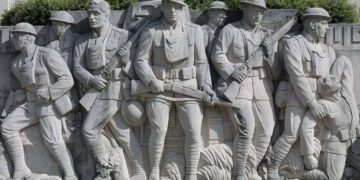

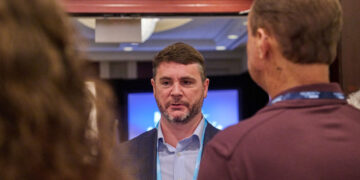
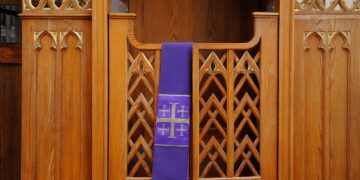
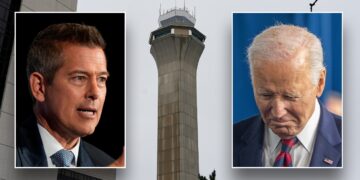


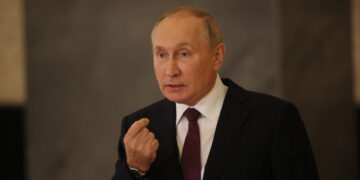
























 Reaction & Commentary
Reaction & Commentary
